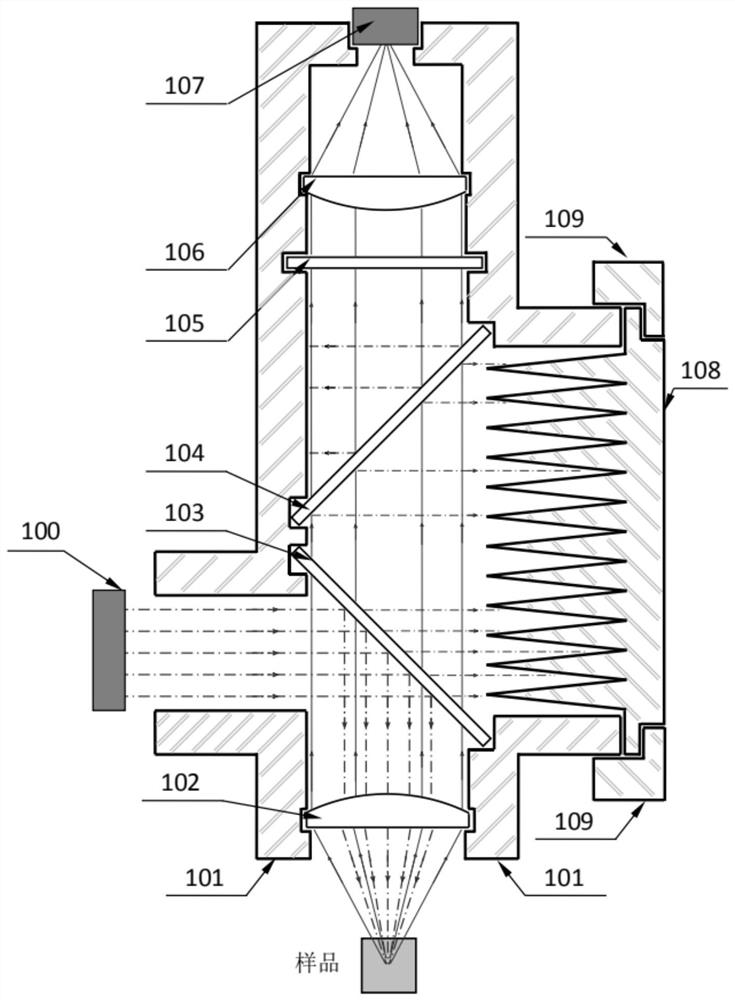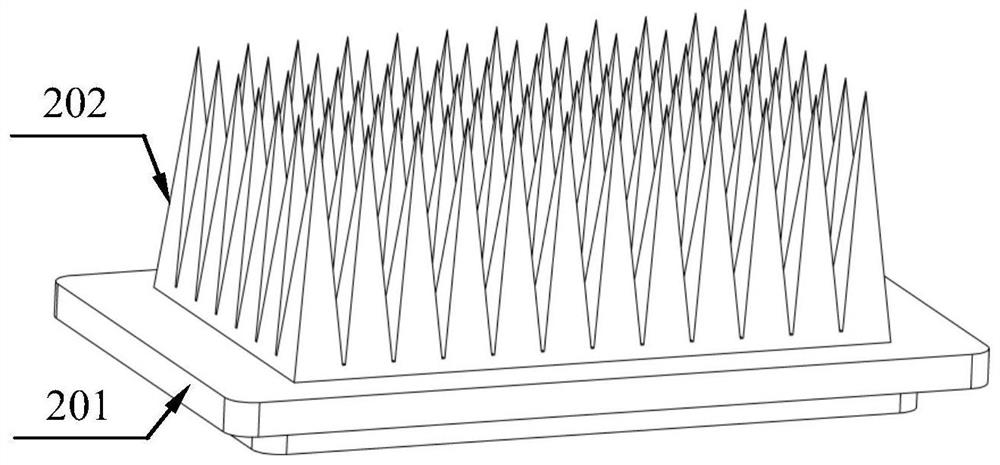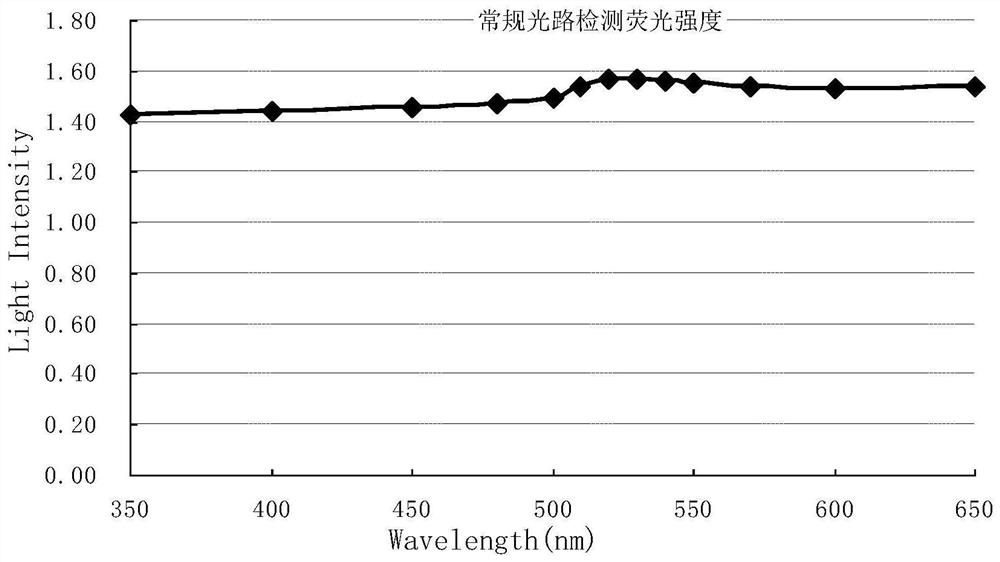Extinguishing weak fluorescence detection system
A fluorescence detection, weak technology, applied in the direction of fluorescence/phosphorescence, measuring devices, material analysis through optical means, etc., can solve the problems that affect the accuracy, cannot be detected, and the energy of the excitation light is large, so as to reduce the energy proportion, Accurate detection results, reducing the effect of interfering fluorescence
- Summary
- Abstract
- Description
- Claims
- Application Information
AI Technical Summary
Problems solved by technology
Method used
Image
Examples
Embodiment 1
[0032] like figure 1 As shown, an extinction type weak fluorescence detection system in this embodiment includes: an excitation light optical path 100 , a light-shielding housing 101 , a fluorescence collecting lens 102 , a main dichroic mirror 103 , a secondary two A dichroic mirror 104, a bandpass filter 105, a converging lens 106, a photoelectric conversion detector 107, and a conical extinction filter 108;
[0033] The excitation light emitted by the excitation light path 100 is incident on the main dichroic mirror 103 in a parallel state, and then a part is reflected to the fluorescence collection lens 102, and then converged by the fluorescence collection lens 102 and then irradiated into the sample, and then incident on the main dichroic mirror. The other part of the excitation light on 103 passes through the main dichroic mirror 103 and then irradiates on the cone-surface light absorber 108, where it is dispersed and absorbed;
[0034] The fluorescence generated by th...
Embodiment 2
[0056] Compare the effects of Embodiment 1 of the present invention and the conventional fluorescence detection system, wherein, compared with Embodiment 1, the difference of the conventional fluorescence detection system is that there is no secondary dichroic mirror 104 and no conical surface quencher 108 therein.
[0057] The specific measurement method and process are as follows: before the detection, two sets of 13 interference narrow bandpasses with central wavelengths of 350nm, 400nm, 450nm, 480nm, 500nm, 510nm, 520nm, 530nm, 540nm, 550nm, 570nm, 600nm and 650nm are customized Filter, install narrow-band filters with different center wavelengths on the filter switching strip to form two sets of convenient and fast switching filter sets, which are respectively installed in the photoelectric conversion of the conventional fluorescence detection optical path and the fluorescence detection optical path of the present invention In front of the lens directly in front of the det...
PUM
| Property | Measurement | Unit |
|---|---|---|
| reflectance | aaaaa | aaaaa |
| reflectance | aaaaa | aaaaa |
Abstract
Description
Claims
Application Information
 Login to View More
Login to View More - R&D
- Intellectual Property
- Life Sciences
- Materials
- Tech Scout
- Unparalleled Data Quality
- Higher Quality Content
- 60% Fewer Hallucinations
Browse by: Latest US Patents, China's latest patents, Technical Efficacy Thesaurus, Application Domain, Technology Topic, Popular Technical Reports.
© 2025 PatSnap. All rights reserved.Legal|Privacy policy|Modern Slavery Act Transparency Statement|Sitemap|About US| Contact US: help@patsnap.com



